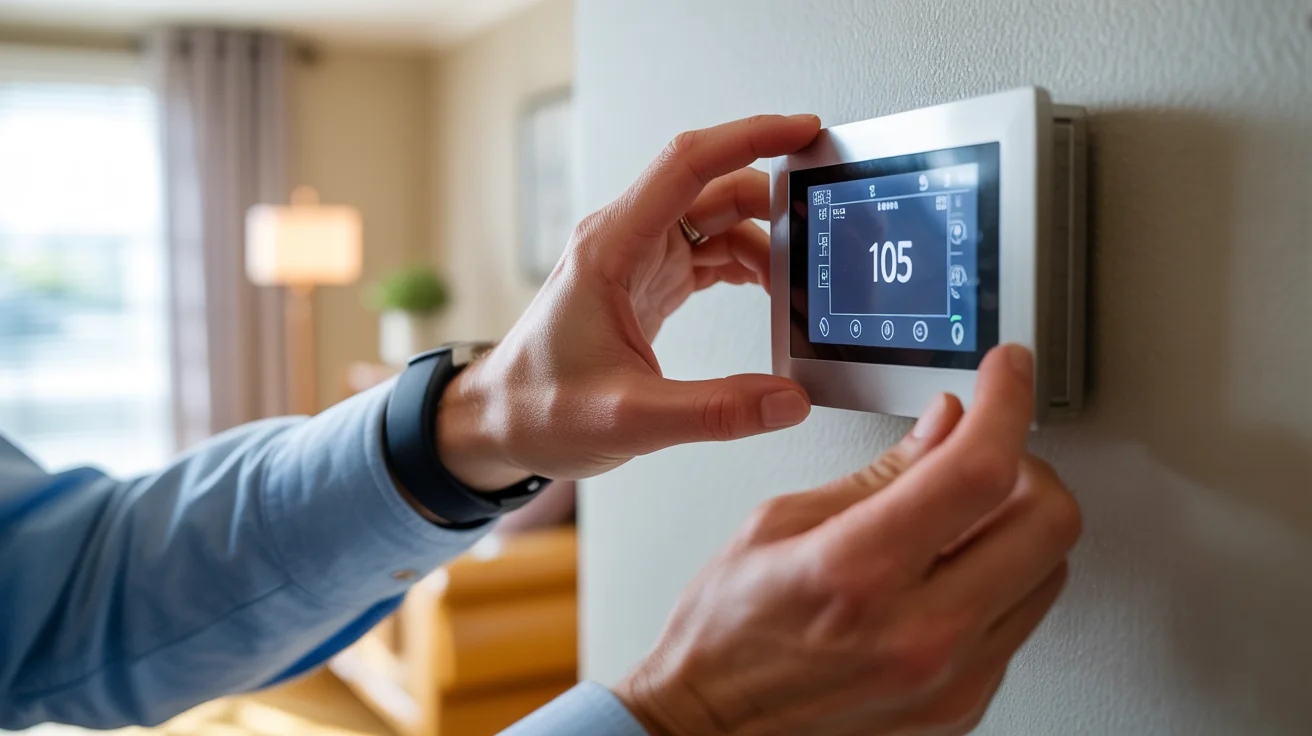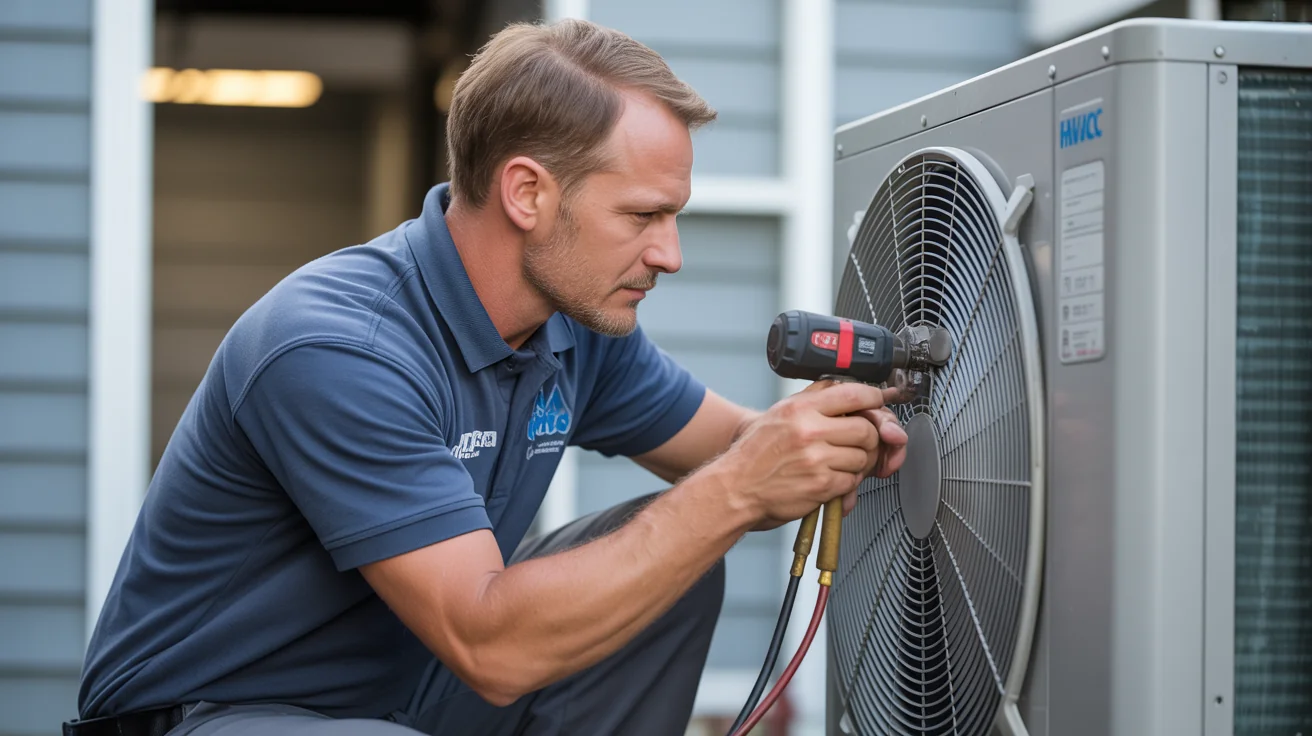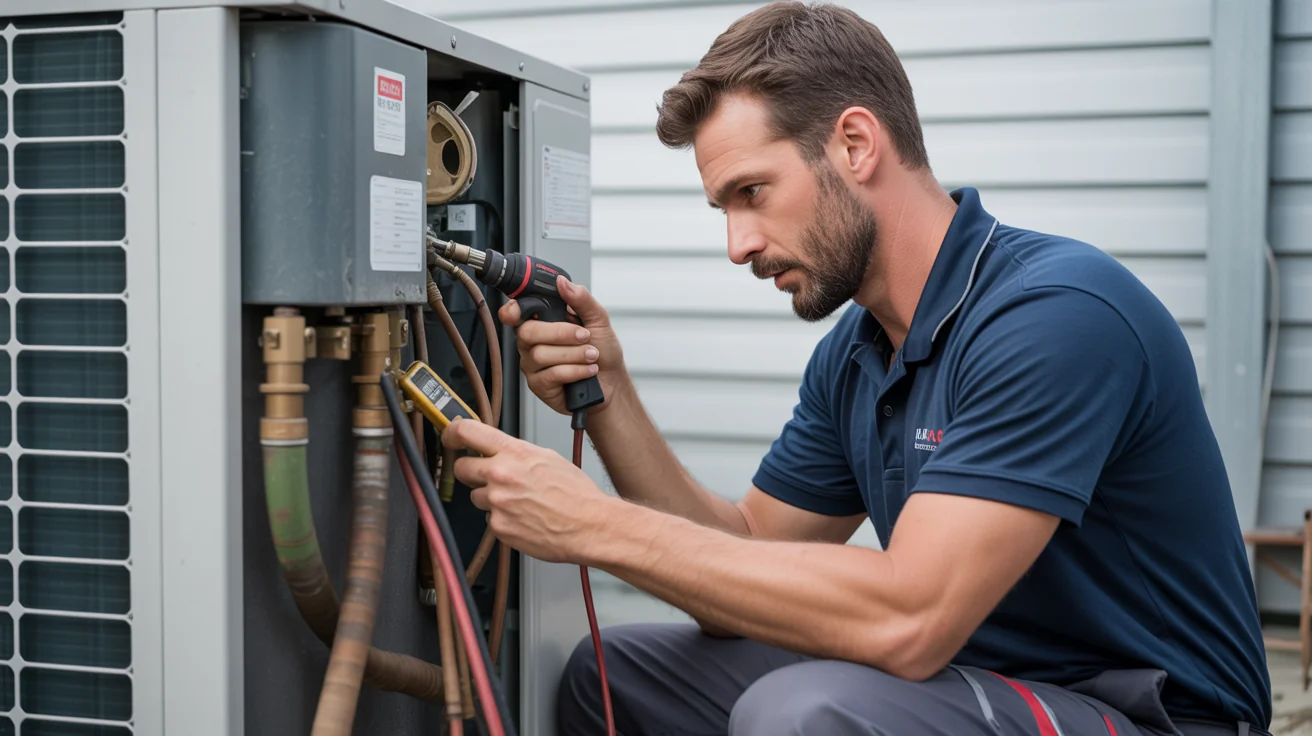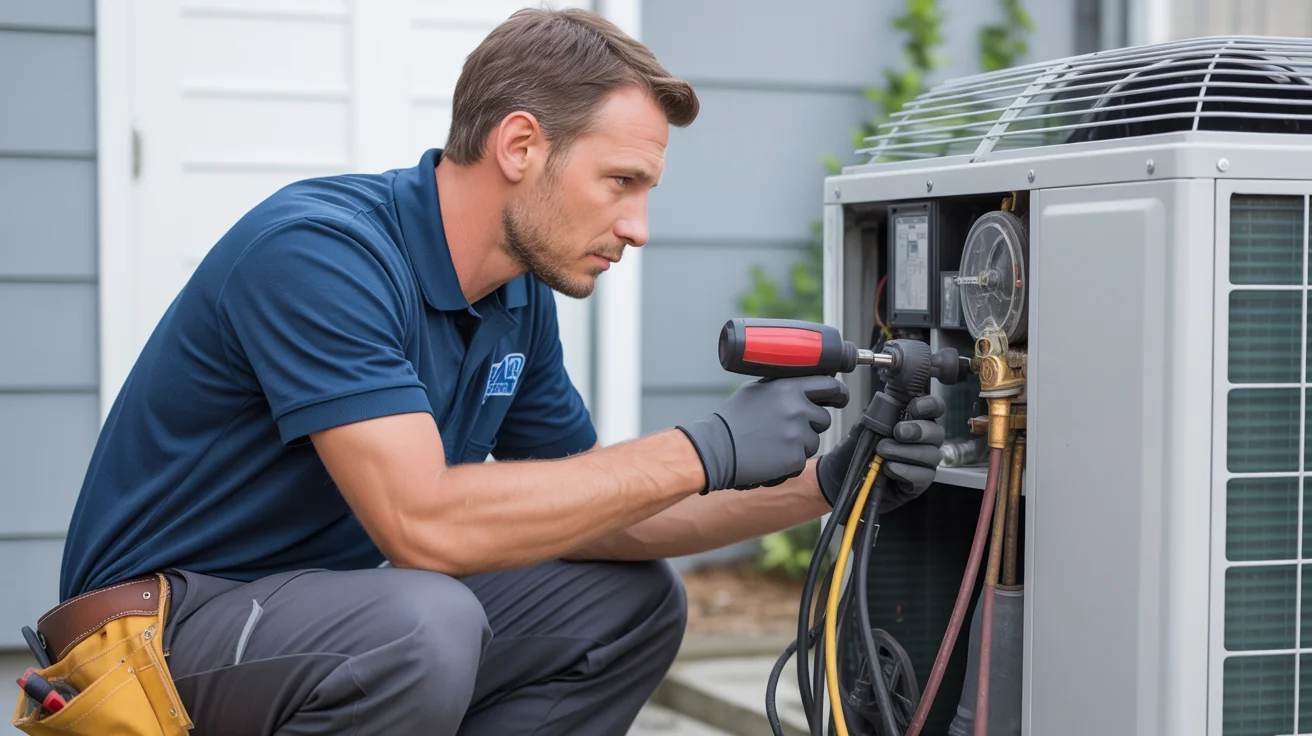Energy-Saving AC Settings in Texas Heat: Ultimate Thermostat Guide
Comprehensive guide to energy-saving AC settings for Texas heat. Reduce bills by $300-600 annually with optimal thermostat programming, peak hour strategies, and professional optimization.

- Why Your Thermostat Settings Matter More in Texas
- Why North Texas AC Costs Are Different
- The Settings That Actually Work in Texas Heat
- Temperature Settings Comparison
- Texas Summer AC Settings Impact Analysis
- My Personal Programming Schedule (Copy This)
- The Humidity Secret Most Texans Don’t Know
- Equipment Optimization for Maximum Savings
+ 9 more sections below...
- Why Your Thermostat Settings Matter More in Texas
- Why North Texas AC Costs Are Different
- The Settings That Actually Work in Texas Heat
- Temperature Settings Comparison
- Texas Summer AC Settings Impact Analysis
- My Personal Programming Schedule (Copy This)
- The Humidity Secret Most Texans Don’t Know
- Equipment Optimization for Maximum Savings
+ 9 more sections below...
Why Your Thermostat Settings Matter More in Texas
Learn more about our professional Thermostat services.
You want to know what shocks me every summer? I’ll walk into someone’s house after they call about a $600 electric bill, and their thermostat is sitting at 72°F wondering why their system never stops running.
After fifteen years of doing this in North Texas, I’ve learned something crucial - it’s not just about what temperature you set, it’s about WHEN you set it.
Perfect example: last month I worked with a family in Frisco whose bill dropped from $420 to $180. Same house, same system, same comfort - but we stopped fighting those peak rates and started working with their system instead of against it.
The reality check: With electricity costing more during peak hours (when everyone’s AC is cranking), timing your cooling is just as important as the temperature you choose. I’ve seen smart programming save homeowners $300-600 per year without sacrificing comfort.
And here’s something most people don’t realize - Texas gives you power to choose your electric company. Shop around. The difference between the most expensive and cheapest rates can be 30-40%. Combine smart rates with smart thermostat settings, and you’re looking at serious money back in your pocket.
Why North Texas AC Costs Are Different
Related: AC Costs
Our extreme climate creates unique cost factors that don’t exist elsewhere. The 24/7 summer operation accelerates wear patterns far beyond what manufacturers design for in milder climates. Extreme temperature swings stress electrical components through constant expansion and contraction that loosens connections and degrades performance. Dust storms and allergens clog systems faster, requiring more frequent filter changes and professional cleaning to maintain efficiency. High humidity creates corrosion and mold issues that damage equipment and reduce indoor air quality. Storm season causes surge damage and debris impacts that can destroy expensive components without proper protection.
The Settings That Actually Work in Texas Heat
My Four-Step Strategy That Actually Works
After working with hundreds of families across North Texas, here’s the approach that delivers real results:
Step 1: Make Friends with 78°F
I get it - you’re thinking “78 degrees? You’ve lost your mind.” But stick with me here. With ceiling fans running and humidity under control, 78°F feels just like 75°F used to. I’ve had customers who were absolutely convinced they’d be miserable at 78°F call me two weeks later just to say thanks.
The secret is humidity control. If your house feels sticky at 78°F, you don’t have a temperature issue - you’ve got a humidity problem.
Step 2: Stop Cooling Empty Houses
Here’s where most people screw up - they think shutting the system off completely saves money. Big mistake. Your system works twice as hard cooling a 90°F house back to 78°F.
Instead, let it drift up to 82-83°F while you’re at work. When you get home, it takes just 20-30 minutes to get comfortable again, not 2 hours of your system running at maximum effort.
Step 3: Use Those Cool Texas Nights
Even on brutal 105°F days, Texas usually cools down to the 80s at night. Take advantage of that free cooling! Set your thermostat to 76-77°F overnight. Your system gets a much-needed break, and you’ll actually sleep better.
Step 4: Play Peak Hours Like a Pro
This is the trick that saves the most money. At 2 PM, before peak rates hit, cool your house down to 76°F. Then during those expensive 3-7 PM hours, bump the thermostat UP to 80°F and coast. You’re basically turning your house into a giant thermal battery.
Temperature Settings Comparison
Texas Summer AC Settings Impact Analysis
| Setting | Monthly Cost | Daily Runtime | Comfort Level | Savings Potential |
|---|---|---|---|---|
| 72°F Constant | $320-380 | 18-22 hours | Maximum | $0 (baseline) |
| 75°F Constant | $250-300 | 14-18 hours | High | $70-80/month |
| 78°F Constant | $180-220 | 10-14 hours | Good | $140-160/month |
| Smart Schedule | $130-170 | 8-12 hours | Optimized | $190-210/month |
| Peak Management | $110-150 | Variable | Strategic | $220-240/month |
My Personal Programming Schedule (Copy This)
The Exact Schedule I Use at My House
I live in a 2,400 sq ft home in Plano, so here’s my actual thermostat programming:
Monday through Friday:
Start at 6:00 AM with 76°F for comfortable wake-up temperatures that ease the transition from sleep to daily activities. Bump the temperature to 82°F at 8:00 AM when heading to work, allowing the system to reduce energy consumption while the house is unoccupied. Return to 78°F at 5:00 PM for comfortable home time when family members return from work and school. Wind down to 76°F at 10:30 PM for bedtime preparation, providing cooler sleeping conditions that improve rest quality.
My peak hour game:
Pre-cool to 75°F at 2:00 PM while rates are still low, using your home’s thermal mass like a battery to store cooling energy. Raise the temperature to 81°F at 3:00 PM and coast through the expensive hours when utility companies charge premium rates for electricity. Return to normal 78°F at 7:00 PM when peak rates end, resuming regular comfort levels for evening activities and relaxation.
Weekends:
Since I’m home more, I keep it steady at 78°F during the day, 76°F at night.
Last summer my highest bill was $167. My neighbor with the nearly identical house but no programming? $340. Same month, same weather, same neighborhood. Only difference was thermostat strategy.
The Humidity Secret Most Texans Don’t Know
Here’s what changed everything for me and my customers: it really isn’t the heat, it’s the humidity.
I had this customer in Allen who was absolutely frustrated because 78°F felt “sticky and awful” in her house. I checked her system - everything looked perfect. Then I tested the humidity: 68%. No wonder she was miserable.
We added a whole-home dehumidifier, and suddenly 78°F felt like 75°F used to feel. She actually runs it at 79°F most days now and loves it. That dehumidifier paid for itself through energy savings in less than 18 months.
The magic number? Keep your indoor humidity between 45-55%. At that level, 78°F feels comfortable, even luxurious. Above 60% humidity? Even 75°F feels sticky and uncomfortable.
Equipment Optimization for Maximum Savings
Equipment Impact on Energy Savings
Essential Maintenance: Monthly filter changes require a $60 per year investment that delivers $150-300 in annual savings through improved efficiency. Annual professional tune-ups cost $149-199 but provide $200-400 in savings through optimized performance and prevented breakdowns. Duct cleaning every 3-5 years costs $300-500 and generates $100-200 in annual savings through improved airflow and reduced system strain.
Smart Technology Upgrades: Smart thermostats cost $150-300 installed and save $200-400 annually through intelligent scheduling and peak hour management. Whole-home dehumidifiers require $1,500-2,500 investment but deliver $300-500 annual savings by reducing cooling load and improving comfort. Zoning systems cost $2,500-4,500 installed and provide $400-800 annual savings by conditioning only occupied areas.
System Upgrades: Duct sealing costs $1,000-2,000 and saves $200-400 annually by preventing conditioned air loss and improving system efficiency. Variable-speed systems require $3,000-6,000 investment but deliver $400-800 annual savings through precise capacity control and reduced energy consumption. High-efficiency system replacement costs $6,000-12,000 and provides $600-1,200 annual savings through advanced technology and superior performance.
Regional Texas Considerations
North Texas City Climate Adjustments
Dallas-Fort Worth Metro:
- Base summer setting: 78°F
- Peak hour drift: 80°F maximum
- Night setting: 76-77°F
- Consider: Urban heat island effect, higher humidity tolerance
Frisco/Plano/Allen:
- Base summer setting: 77-78°F
- Peak hour drift: 79°F maximum
- Night setting: 75-76°F
- Advantage: Newer homes with better insulation, lower humidity
- Base summer setting: 78-79°F
- Peak hour drift: 80-81°F maximum
- Night setting: 76-77°F
- Consider: Mix of home ages, variable insulation quality
Professional Optimization Services
What’s Included in Professional Programming
- Custom temperature scheduling for your family’s routine
- Peak rate optimization for your utility provider
- Seasonal adjustment planning
- Smart thermostat setup and training
- Annual review and updates
Your Benefits
- $200-400 annual savings guarantee
- Improved comfort consistency throughout home
- Reduced peak hour electricity costs
- Extended equipment life through improved operation
- Performance guarantee with follow-up service
Texas Energy Optimization Package: Complete thermostat programming, peak rate setup, and seasonal scheduling. Includes smart thermostat upgrade (if needed) and annual optimization review. Guaranteed 20% energy savings or we adjust the strategy at no cost.
The Questions I Get Asked Every Week
“78 degrees? Are you trying to kill me?”
I hear this constantly! Look, I live in the same brutal heat you do. My own family thought I was crazy until we actually tried it. With ceiling fans running and humidity under control, 78°F honestly feels like 75°F used to. Give it two weeks - your body adjusts, and your bank account will love you.
“What will I actually save?”
Honest numbers? I track my customers’ bills religiously. Going from constant 72°F to smart scheduling typically saves $150-250 per month during summer. That’s $900-1,500 per year - basically like getting a free month of electricity in a typical North Texas home.
“What about my heat pump in winter?”
Heat pumps are fantastic in our North Texas climate. Keep winter settings at 68-70°F. Go lower, and your backup electric heat kicks in - and that’s expensive. I’ve seen winter bills double when people crank heat pumps down to 65°F.
“Do I need different settings on really humid days?”
Absolutely. When it’s 95°F and 85% humidity outside, I tell my customers it’s okay to drop to 76-77°F. But here’s the key - fix the humidity problem, don’t just throw cold air at it. Dehumidification is more comfortable than overcooling.
“Will this hurt my system?”
Actually the opposite. These settings extend equipment life because your system isn’t running constantly. I see fewer service calls from customers who use proper programming. Less runtime equals less wear and tear.
“When will I see the savings?”
Your next electric bill. I’m not kidding. Most customers see 25-35% reductions immediately. The savings are that dramatic when you stop fighting Texas peak rates.
Stop Overpaying for Comfort
Look, I’ve shared everything I know about beating Texas heat without breaking the bank. But knowing what to do and actually implementing it are totally different things.
If you’re a DIY person, take this information and reprogram your thermostat this weekend. You’ll see results on your very next bill.
But if you want someone who’s done this hundreds of times to dial it in perfectly for YOUR specific home, YOUR family’s schedule, and YOUR utility company’s rate structure? Just give me a call.
Here’s exactly what I’ll do:
I’ll analyze your actual usage patterns and bills to understand your specific energy consumption and identify the biggest opportunities for savings. Program your thermostat for maximum savings based on your family’s schedule, home characteristics, and utility rate structure. Teach you how to tweak settings by season so you can adapt the programming as weather patterns change throughout the year. Set up alerts so you never miss peak hour opportunities to save money during the most expensive electricity periods.
Ready to cut your cooling costs by 30-40%? Call (940) 390-5676 and let’s get your thermostat working FOR you instead of against you.
I guarantee you’ll save money, or I’ll come back and adjust the programming until you do. That’s how confident I am in these strategies.
Last Updated: August 22, 2025
Jupitair HVAC serves all of North Texas including Plano, Frisco, McKinney, Allen, and surrounding areas. Licensed & Insured.
Related Resources
Looking for more information? Check out these helpful resources:
- View All HVAC Services - Complete list of our residential and commercial services
- Service Areas - We serve Frisco, Plano, McKinney, Allen, and surrounding areas
- Emergency Service - Available 24/7 for urgent HVAC needs
- Maintenance Plans - Keep your system running efficiently year-round
- HVAC Blog - Expert tips and advice for North Texas homeowners
Need Professional HVAC Service?
Our certified technicians are ready to help with any HVAC needs in North Texas




